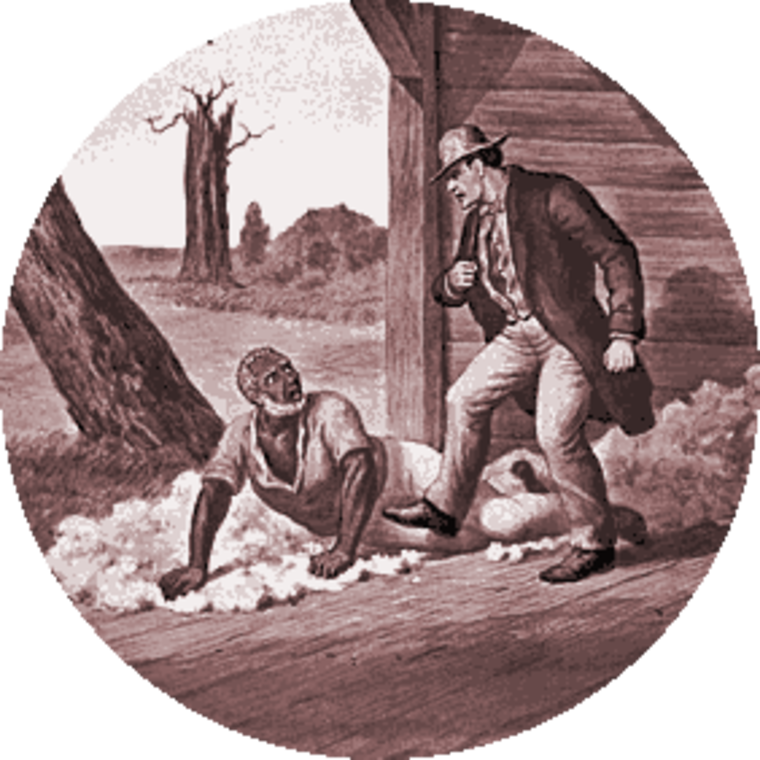|
Piggy (Merrie Melodies)
Piggy is the name of two animated cartoon characters in the ''Merrie Melodies'' series of films distributed by Warner Bros. The first character was a fat, black pig wearing a pair of shorts with two large buttons in the front, and his first film was ''You Don't Know What You're Doin'!'' Piggy's name came from one of two brothers who were childhood classmates of Freleng's, nicknamed "Porky" and "Piggy". Merrie Melodies Animator Rudolf Ising introduced Piggy to replace his previous character, Foxy, as the star of the ''Merrie Melodies'' series Ising was directing for producer Leon Schlesinger. Nonetheless, Ising had only made two Piggy shorts in 1931 before he left Warner Bros. with partner Hugh Harman. The animators who took over the ''Merrie Melodies'' cartoons dropped the Piggy character (as well as his girlfriend Fluffy) and turned the series into a string of one-shots. Piggy's coloration and dress were identical to those of the Walt Disney character Mickey Mouse before the ... [...More Info...] [...Related Items...] OR: [Wikipedia] [Google] [Baidu] |
Looney Tunes
''Looney Tunes'' is an American Animated cartoon, animated comedy short film series produced by Warner Bros. starting from 1930 to 1969, concurrently with its partner series ''Merrie Melodies'', during the golden age of American animation.Looney Tunes . ''www.bcdb.com'', April 12, 2012 Then some new cartoons were produced from the late 1980s to the mid 2010s as well as other made productions beginning in 1972. The two series introduced a large List of Looney Tunes and Merrie Melodies characters, cast of characters, including Bugs Bunny, Daffy Duck, and Porky Pig. The term ''Looney Tunes'' has since been expanded to also refer to the characters themselves. ''Looney Tunes'' and ''Merrie Melodies'' were initially produced by Leon Schlesinger and animators Harman and Ising, Hugh Harman and Rudolph Ising from 1930 to 1933. [...More Info...] [...Related Items...] OR: [Wikipedia] [Google] [Baidu] |
Hugh Harman
Hugh Harman (August 31, 1903 – November 25, 1982) was an American animator. He was known for creating the Warner Bros. Cartoons and MGM Cartoons and his collaboration with Rudolf Ising during the golden age of American animation. Career He began his work with Walt Disney in 1922, working on Disney's early Laugh-o-Gram Cartoons. When that company went bankrupt, Harman and partner Rudolf Ising tried to start a new series based on the Arabian Nights, but were unable to obtain funding. Disney called them back when he began work for Charles Mintz, producing the Alice Comedies live-action/animation hybrid shorts and the Oswald the Lucky Rabbit cartoons. After a dispute over money, Mintz forced out Disney in 1928 and lured most of his animators, Harman and Ising included, to join him. After Carl Laemmle replaced Mintz with a young Walter Lantz in early 1929, Harman and Ising, alongside a number of former Oswald animators put together a pilot short, "Bosko the Talk-Ink Kid", featu ... [...More Info...] [...Related Items...] OR: [Wikipedia] [Google] [Baidu] |
Fictional Pigs
This article contains a list of pigs in various categories of fiction, including pigs and warthogs. Advertising mascots and Animatronics * Madame Oink, an early guest star at Chuck E. Cheese's Pizza Time Theatre. She spoke in a thick French accent and often sang traditional French songs. She appeared in several earlier show tapes from the late 1970s and early 1980s. * Moo and Oink, a grocery store chain. * Percy Pig, sugary treat that can be purchased from Marks & Spencer. * Piggly Wiggly, supermarket chain which features a pig as its mascot. * Pig 'n Whistle restaurants. * Stella, intelligent and sociable pig in a vegan children book: "The Pig Who Made It Big" In literature Comics Nursery rhymes and fairy tales *The pigs in "Birds of a feather" nursery rhyme *The Three Little Pigs *The market-going little pig and his brethren in the counting rhyme, used to name toes, who variously had roast beef or didn't, etc. *The fat pig, the buying of which was the reason for going t ... [...More Info...] [...Related Items...] OR: [Wikipedia] [Google] [Baidu] |
Film Characters Introduced In 1936
A film also called a movie, motion picture, moving picture, picture, photoplay or (slang) flick is a work of visual art that simulates experiences and otherwise communicates ideas, stories, perceptions, feelings, beauty, or atmosphere through the use of moving images. These images are generally accompanied by sound and, more rarely, other sensory stimulations. The word "cinema", short for cinematography, is often used to refer to filmmaking and the film industry, and to the art form that is the result of it. Recording and transmission of film The moving images of a film are created by photographing actual scenes with a motion-picture camera, by photographing drawings or miniature models using traditional animation techniques, by means of CGI and computer animation, or by a combination of some or all of these techniques, and other visual effects. Before the introduction of digital production, series of still images were recorded on a strip of chemically sensitiz ... [...More Info...] [...Related Items...] OR: [Wikipedia] [Google] [Baidu] |
Film Characters Introduced In 1931
A film also called a movie, motion picture, moving picture, picture, photoplay or (slang) flick is a work of visual art that simulates experiences and otherwise communicates ideas, stories, perceptions, feelings, beauty, or atmosphere through the use of moving images. These images are generally accompanied by sound and, more rarely, other sensory stimulations. The word "cinema", short for cinematography, is often used to refer to filmmaking and the film industry, and to the art form that is the result of it. Recording and transmission of film The moving images of a film are created by photographing actual scenes with a motion-picture camera, by photographing drawings or miniature models using traditional animation techniques, by means of CGI and computer animation, or by a combination of some or all of these techniques, and other visual effects. Before the introduction of digital production, series of still images were recorded on a strip of chemically sensitized ... [...More Info...] [...Related Items...] OR: [Wikipedia] [Google] [Baidu] |
Porky Pig
Porky Pig is an animated character in the Warner Bros. ''Looney Tunes'' and ''Merrie Melodies'' series of cartoons. He was the first character created by the studio to draw audiences based on his celebrity, star power, and the animators created many critically acclaimed shorts featuring the character. Even after he was supplanted by later characters, Porky continued to be popular with moviegoers and, more importantly, the Warners directors, who recast him in numerous everyman and sidekick roles. He is known for his signature line at the end of many shorts, "Th-th-th-that's all, folks!" This slogan (without stuttering) had also been used by both Bosko and Buddy (Looney Tunes), Buddy and even Beans (Looney Tunes), Beans at the end of Looney Tunes cartoons. In contrast, the Merrie Melodies series used the slogan: ''So Long, Folks!'' until the mid-1930s when it was replaced with the same one used on the ''Looney Tunes'' series (when Bugs Bunny was the closing character, he would break ... [...More Info...] [...Related Items...] OR: [Wikipedia] [Google] [Baidu] |
Caucasian Race
The Caucasian race (also Caucasoid or Europid, Europoid) is an obsolete racial classification of human beings based on a now-disproven theory of biological race. The ''Caucasian race'' was historically regarded as a biological taxon which, depending on which of the historical race classifications was being used, usually included ancient and modern populations from all or parts of Europe, Western Asia, Central Asia, South Asia, North Africa, and the Horn of Africa. First introduced in the 1780s by members of the Göttingen school of history, the term denoted one of three purported major races of humankind (those three being Caucasoid, Mongoloid, and Negroid). In biological anthropology, ''Caucasoid'' has been used as an umbrella term for phenotypically similar groups from these different regions, with a focus on skeletal anatomy, and especially cranial morphology, without regard to skin tone. Ancient and modern "Caucasoid" populations were thus not exclusively "white", but rang ... [...More Info...] [...Related Items...] OR: [Wikipedia] [Google] [Baidu] |
Stereotype
In social psychology, a stereotype is a generalized belief about a particular category of people. It is an expectation that people might have about every person of a particular group. The type of expectation can vary; it can be, for example, an expectation about the group's personality, preferences, appearance or ability. Stereotypes are sometimes overgeneralized, inaccurate, and resistant to new information, but can sometimes be accurate. While such generalizations about groups of people may be useful when making quick decisions, they may be erroneous when applied to particular individuals and are among the reasons for prejudicial attitudes. Explicit stereotypes An explicit stereotype refers to stereotypes that one is aware that one holds, and is aware that one is using to judge people. If person ''A ''is making judgments about a ''particular'' person ''B'' from a group ''G'', and person ''A'' has an explicit stereotype for group ''G'', their decision bias can be partiall ... [...More Info...] [...Related Items...] OR: [Wikipedia] [Google] [Baidu] |
Censored 11
The Censored Eleven is a group of ''Looney Tunes'' and ''Merrie Melodies'' cartoons originally produced and released by Warner Bros. that were withheld from syndication in the United States by United Artists (UA) since 1968. UA owned the distribution rights to the Associated Artists Productions library at that time, and decided to pull these 11 cartoons from broadcast because the use of ethnic stereotypes in the cartoons, specifically African stereotypes, was deemed too offensive for contemporary audiences. The ban has been continued by UA and the successive owners of the pre-August 1948 ''Looney Tunes''/''Merrie Melodies''. , these shorts have not been officially broadcast on television and have only been exhibited once theatrically by Warner Bros. in 2010 (see below for more details) since their withdrawal. They have turned up, however, on low-cost VHS and DVD collections. Background The cartoon output of Warner Bros. during its most active period even sometimes had censors ... [...More Info...] [...Related Items...] OR: [Wikipedia] [Google] [Baidu] |
Uncle Tom
Uncle Tom is the title character of Harriet Beecher Stowe's 1852 novel, ''Uncle Tom's Cabin''. The character was seen by many readers as a ground-breaking humanistic portrayal of a slave, one who uses nonresistance and gives his life to protect others who have escaped from slavery. However, the character also came to be seen, especially based on his portrayal in pro-compassion dramatizations, as inexplicably kind to white slaveholders. This led to the use of ''Uncle Tom'' – sometimes shortened to just ''a Tom'' – as a derogatory epithet for an exceedingly subservient person or house negro, particularly one aware of their own lower-class racial status. Original characterization and critical evaluations At the time of the novel's initial publication in 1851, Uncle Tom was a rejection of the existing stereotypes of minstrel shows; Stowe's melodramatic story humanized the suffering of slavery for white audiences by portraying Tom as a young, strong Jesus-like figure who is ulti ... [...More Info...] [...Related Items...] OR: [Wikipedia] [Google] [Baidu] |
Will Friedwald
Will Friedwald (born September 16, 1961) is an American author and music critic. He has written for newspapers that include the ''Wall Street Journal'', ''New York Times'', ''Village Voice'', ''Newsday'', ''New York Observer'', and ''New York Sun'' – and for magazines that include ''Entertainment Weekly'', ''Oxford American'', '' New York'', ''Mojo'', ''BBC Music Magazine'', ''Stereo Review'', ''Fi'', and ''American Heritage''. Selected works Books As main author As co- and contributing-author Essays, articles Journalism: print/online newspapers, magazines, and broadcasts Liner notes Family Father: Herb Friedwald Will Friedwald is the son of the late Herb Friedwald ''(né'' Herbert F. Friedwald; 1935–1997) who was a jazz producer, jazz historian, and record label lawyer in New York. Herb was the founder of the short-lived jazz label, Kharma Records. Among other pursuits, Herb wrote liner notes Liner notes (also sleeve notes or album notes) are ... [...More Info...] [...Related Items...] OR: [Wikipedia] [Google] [Baidu] |




